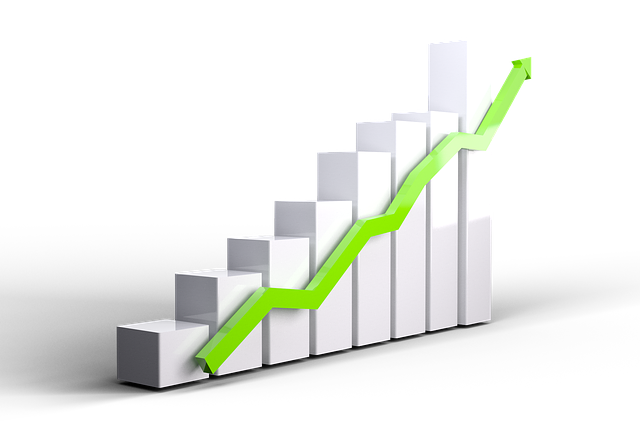This process is consequential for most small businesses inside the UK. Doing so allows us to reach and maintain necessary financial growth. Cash flow forecasting allows businesses to predict their future monetary inflow and outflow.
This can be done on a monthly, quarterly, or yearly basis.
This method helps businesses to make important financial decisions with confidence. By monitoring the flow of cash in and cash outflows of the business, companies can plan for future expenses and investments.
In turn, this helps them to stay competitive in the market.
What is a Cash Flow Forecast?
A cash flow forecast is used as a financial tool to help businesses predict the amount of money coming in and going out during a specific period.
It takes into account all sources of income, including sales revenue, loans, investments, cash payments and any other inflows.
On the other hand, it also considers outflows such as operating expenses, payments to suppliers, salaries, taxes, and loan repayments.
Net Cash Flow will affect the value of your business and plays a critical role in working capital and in keeping the business operating effectively.
Actual cash flows may differ from the forecast due to various factors such as unexpected expenses, delayed payments, or changes in the market.
An accurate cash flow forecast helps businesses avoid financial difficulties and make informed decisions.
A negative cash flow figure indicates that the business is spending more money than it’s earning, which can lead to cash flow problems.
On the other hand, positive cash flow figures show that the business is generating enough revenue to cover its expenses and have some cash balance left over for potential investments or growth opportunities.
Importance of Cash Flow Forecasting

Cash flow forecasting is essential for both small and large businesses as it helps in the following ways:
Better decision-making:

By accurately predicting cash flows, businesses can make informed decisions regarding investments, expansions, and managing expenses. This allows companies to plan and avoid financial risks.
Improved financial management:

With a clear understanding of future cash flow, businesses can better manage their finances and allocate resources wisely. This can help companies to reduce unnecessary costs and improve overall profitability.
Avoiding financial troubles:

Cash flow forecasting equips businesses with the ability to anticipate potential cash shortages and take necessary measures to avoid them. By identifying potential issues beforehand, companies can prevent any financial crises or difficulties.
Debt management:

By forecasting cash flow, businesses can plan their debt repayment schedule and avoid any delays or penalties. This helps companies to maintain a good credit score and build strong relationships with lenders.
Long-term planning:

Cash flow forecasting allows businesses to plan for the long term by predicting future financial needs and identifying potential growth opportunities. This can help companies to stay ahead of the competition and achieve sustainable growth.
Cash Flow Forecasts
Most business owners must begin by looking at their numbers and reviewing their financial documents:
- Cash flow statements
- Income statements
- Balance sheets
This is done so you can essentially understand how much cash flow is coming in and out of the business. Once you have a clear understanding of your current financial situation, you can begin to create a cash flow forecast. This involves projecting future cash inflow and outflow based on past trends and expected changes in the market.
It is important to regularly update and review these forecasts to ensure accuracy and make any necessary adjustments.
Sales Forecast of Cash Flow Forecast
Once your accountant has an understanding of monthly revenue and expenses coming into the business, they can successfully start generating your sales forecast of business cash flow.
The sales forecast of current cash flow aids in direct forecasting and the calculation of future cash flow.
Predicting the money coming in and out of the business is a crucial part of helping you scale. Preventing negative cash flow is what your business should be aiming to do in the long term.
Cashflow forecasting is a crucial aspect of business planning for most small and large businesses.
The prediction of cash flow over a given period will help any business owners foresee any strengths & weaknesses in future monetary flow.
Ensuring this is done early will help effectively plan for company growth in the future and avoid any chances of money shortages.
Cash Flow Forecasting Process
Here is how you can manufacture an effective cashflow for your business:
1. Collation of Data

A team of accountants will gather your required financial documents from the last 12 months. These docs will consist of your business’s income statement(s), balance sheets, and cash flow statements.
2. Identify Sources of Revenue

You will then provide a catalogue, or inventory of all the money coming into the business and where it came from.
This ranges from net income and sales revenue to loans, investments, and any other sources of income.
3. Approximate money going in and out of the business

Your accountant will summarize and; accumulate all your company expenses:
– Payroll
– Rent
– Utilities
– Taxes
Including any other costs of relevancy to your business.
4. Generate Business Forecast

A team of accountants will produce a forecast for your business. This forecast will help map the next 12 months of your business growth tenure and will be supplied monthly.
In Summary:
Analyse historical data:
Begin by reviewing your company’s past financial performance. This includes revenue trends, expenditure patterns, and past cash flow statements.
This will allow you to identify patterns and forecast future performance more accurately.
Estimate inflows and outflows:
Determine the expected cash inflows and outflows for the forecast period. This should include all income and expenditures, such as sales, expenses, salaries, taxes, loans, accounts payable and any other financial obligations.
Establish a timeline:
Decide on the time frame for your cash flow forecast. This may be monthly, quarterly, or annually depending on your business needs.
A shorter time frame may provide more detailed information, but will also require more frequent updating.
Account for uncertainties:
It’s important to factor in potential uncertainties and risks. This includes possible changes in market conditions, unexpected expenses, or delays in payments.
Creating multiple scenarios can help to prepare for these uncertainties.
Review and adjust regularly:
A cash flow forecast should not be a static document. Regularly review and update your cash forecast, to reflect actual performance and changing circumstances. This will ensure that your forecast remains accurate and useful for decision-making.
Important Things To Remember:
- Cash flow forecasting is a crucial aspect of financial planning for businesses.
- It helps in making informed decisions, improving financial management, and avoiding potential troubles.
- The process involves analysing historical data, estimating inflows and outflows, establishing a timeline, accounting for uncertainties, and regular reviewing and adjusting.
- A cash flow forecast should be regularly updated to reflect actual performance and changing circumstances.
Other Types of Cash Flow
In addition to cash flow from operations, which is derived from the regular business activities, there are other types of cash flow that businesses should consider:
Investing Cash Flow:
This reflects the cash spent on purchasing long-term assets, and cash received from the sale of investments or old assets. It provides insight into a company’s cash position, growth and development strategies and its capability to continue operations without relying on external financing.
Financing Cash Flow:
This includes cash movements from activities such as borrowing money, repaying debt, issuing shares, and paying dividends. This type of cash flow gives an understanding of the business’s financial strategy regarding debt and equity financing.
Understanding all types of cash flow is imperative for a comprehensive assessment of a company’s financial health and strategic decision-making.
What Happens if You Don’t Cash Flow Forecast?
Without a cash flow forecast, businesses may face these potential consequences:
- Difficulty in managing debt repayment: Without an understanding of future cash inflow and outflow, businesses may struggle to repay loans or debts on time, leading to penalties and damage to their credit score.
- Inability to plan for the long term: Without forecasting, businesses may miss opportunities for growth or fail to prepare for potential financial challenges.
- Cash flow problems: Without proper planning, businesses may face cash shortages or negative cash flow, which can lead to financial instability and even bankruptcy.
Therefore, it is essential for businesses of all sizes to regularly forecast their cash flow and use the information to make informed decisions and manage their finances effectively.
Conclusion
Cash flow forecasting is a crucial tool for businesses of all sizes. It allows companies to plan, make informed financial decisions, and avoid potential cash shortages.
By following the steps outlined above, businesses can create accurate and effective cash flow forecasts that will help them achieve long-term success.
So, it is essential for business owners to regularly review and update their cash flow forecasts to ensure financial stability and growth. Remember, proper cash flow management is key to the success of any business.
Cash flow planning and forecasting is not a one-time process but an ongoing one that needs regular attention and updates. As businesses grow and evolve, their cash flow patterns may change, and it’s crucial to stay on top of these changes to make informed decisions.
With the help of today’s technology, there are many cash flow forecasting tools available that can streamline this process and provide real-time insights for businesses.
By utilizing these tools and regularly reviewing their cash flow forecasts, companies can achieve financial stability and growth in a competitive market.








